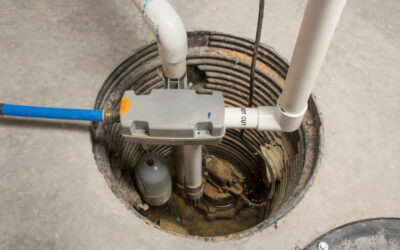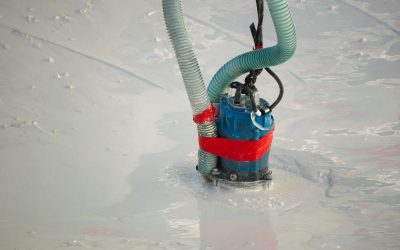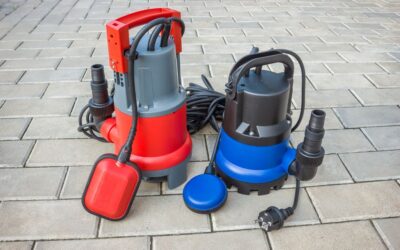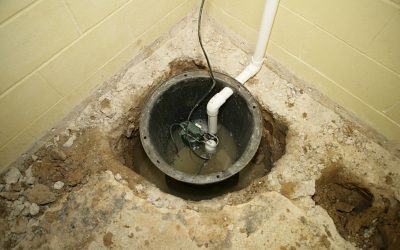A sump pump is the first line of defense against flooding in your property. However, if it begins to fail, it may exacerbate the existing problem or potentially cause flooding in your basement. If your sump pump is continually running or inoperable, we’ve compiled a list of common sump pump issues and troubleshooting options.
Fortunately, sump pump repair and maintenance do not need a lot of time or money. Here are a few of the most typical items to inspect and repair.
Test the Check Valve
If you put water into the sump pit, and it just returns to the pit instead of activating the pump and draining the water, the check valve has to be replaced.
Clean the Sump Pit
The presence of debris in the sump pit is a primary source of float issues. Even if your pump is in good operating order, cleaning up the sump pump pit should be an ongoing aspect of sump pump repair and maintenance. Take care of any loose things in the pit.
Check the Float
The float is an essential component of a sump pump, as well as one of the most fragile. The float lifts with the level of water in the sump pit, causing the pump to begin pumping water out of the pit. Pour some water into the pit gently to test the float.
You’re in luck if the float lifts with the water and the pump operates and then turns off when the water is gone. This test should be repeated every few months.
Clean the Impeller
Keeping debris out of the sump pit is a critical component of sump pump repair. Debris, on the other hand, can find its way past the screen of a sump pump and clog the impeller. To determine if this is your issue, unhook the pump, detach it from the pipe, and remove the pump from the pit.
To access the screen and impeller, disassemble the pump. Remove any debris before reassembling and replacing the pump.
Check the Electricity
Check the electrical connections if the sump pump does not appear to be operating at all and make sure the pump is properly hooked in. If your pump is linked to a ground fault circuit interrupter, keep an eye on it since they might trip.
Reset the GFCI by pressing the reset button. If the power supply appears to be working properly, it is likely that your pump has to be replaced.
What the Noise Coming From the Sump Pump Might Indicate
Banging
A licensed contractor may securely fix your discharge pipes to prevent them from bouncing about with wire and brackets. A specialist will also examine the internal wiring and parts of your sump pump to guarantee that you do not have any difficulties during the year.
Humming
A sump pump often produces a buzzing sound. If it’s noticeably louder than normal, wipe out the vent hole, reset the check valve to discharge, and slowly thaw up frozen pipes. If none of those choices work, contact us to have your impeller and filter cleaned or replaced.
Grinding
If you hear a grinding sound emanating from your sump pump, the impeller may be jammed or need to be replaced. This element prevents water from entering your pump, so when you plan an appointment, a professional technician will make sure it’s operating properly.
Clanging
Clanging noises might be caused by pipe vibrations when the sump pump is running. The easiest solution is to insulate the pipes that are linked to the pump. Otherwise, a trained specialist may be required to modify your discharge pipe so that it is in a more functional and quieter position.
How Long Should a Sump Pump Last?
The lifespan of a sump pump is determined by how frequently it is used. If your sump pump is often used, it should be replaced every five years to guarantee that your basement is protected from flooding during and after severe rains. If your sump pump is rarely used, you should expect it to last 7-10 years.
However, if you do not have a water-powered or battery-powered backup sump pump, we recommend that your primary sump pump be changed every five years. If your sump pump runs regularly, it’s because there’s a lot of groundwater around your home’s foundation, and your pump needs to switch on to cope with it.
The float switch is the movable element of a sump pump that usually breaks first, leaving it incapable of turning on when water fills the sump pit.
Replacing a Sump Pump
Sump pumps are a crucial safeguard against flooding, water damage, and exorbitant repair expenses. Fortunately, there are several warning signals that your pump is nearing the end of its useful life.
By keeping a close eye on your sump pump’s function, you’ll be able to tell when it’s time to replace it before you wake up to a flooded basement.
The replacement of a sump pump might appear to be a difficult chore, but it is a very simple process that can be completed by a homeowner. Prior to actually installing the new pump, be certain that it is the correct size for the sump basin and has plenty of power to keep your basement dry.
If you are changing a sump pump that has served you well in the past, you should go with a newer model of the same kind.
Nevertheless, if you are replacing a pump that broke because it was unable to handle the quantity of water, you should consult with a plumber to determine whether the size or horsepower of the unit has to be increased.
Summary
The sump pump in your house is the first line of defense against precipitation and flooding. That is why it is critical to keep your sump pump in good working order and to have expert repairs performed as needed. Although repairs might be costly, they are far less expensive than renovating a flooded basement.







